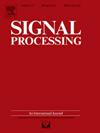Topological signal processing and learning: Recent advances and future challenges
IF 3.4
2区 工程技术
Q2 ENGINEERING, ELECTRICAL & ELECTRONIC
引用次数: 0
Abstract
Developing methods to process irregularly structured data is crucial in applications like gene-regulatory, brain, power, and socioeconomic networks. Graphs have been the go-to algebraic tool for modeling the structure via nodes and edges capturing their interactions, leading to the establishment of the fields of graph signal processing (GSP) and graph machine learning (GML). Key graph-aware methods include Fourier transform, filtering, sampling, as well as topology identification and spatiotemporal processing. Although versatile, graphs can model only pairwise dependencies in the data. To this end, topological structures such as simplicial and cell complexes have emerged as algebraic representations for more intricate structure modeling in data-driven systems, fueling the rapid development of novel topological-based processing and learning methods. This paper first presents the core principles of topological signal processing through the Hodge theory, a framework instrumental in propelling the field forward thanks to principled connections with GSP-GML. It then outlines advances in topological signal representation, filtering, and sampling, as well as inferring topological structures from data, processing spatiotemporal topological signals, and connections with topological machine learning. The impact of topological signal processing and learning is finally highlighted in applications dealing with flow data over networks, geometric processing, statistical ranking, biology, and semantic communication.
在基因调控、大脑、电力和社会经济网络等应用中,开发处理不规则结构数据的方法至关重要。图一直是通过节点和边捕捉其相互作用来建模结构的最常用代数工具,并由此建立了图信号处理(GSP)和图机器学习(GML)领域。主要的图感知方法包括傅立叶变换、滤波、采样以及拓扑识别和时空处理。图虽然用途广泛,但只能对数据中的成对依赖关系进行建模。为此,拓扑结构(如单纯形和细胞复合物)已成为数据驱动系统中更复杂结构建模的代数表示,推动了基于拓扑的新型处理和学习方法的快速发展。本文首先通过霍奇理论介绍了拓扑信号处理的核心原理,由于霍奇理论框架与 GSP-GML 的原理联系,推动了这一领域的发展。然后,它概述了拓扑信号表示、滤波和采样方面的进展,以及从数据中推断拓扑结构、处理时空拓扑信号和与拓扑机器学习的联系。最后强调了拓扑信号处理和学习在网络流量数据、几何处理、统计排序、生物学和语义通信等应用中的影响。
本文章由计算机程序翻译,如有差异,请以英文原文为准。
求助全文
约1分钟内获得全文
求助全文
来源期刊

Signal Processing
工程技术-工程:电子与电气
CiteScore
9.20
自引率
9.10%
发文量
309
审稿时长
41 days
期刊介绍:
Signal Processing incorporates all aspects of the theory and practice of signal processing. It features original research work, tutorial and review articles, and accounts of practical developments. It is intended for a rapid dissemination of knowledge and experience to engineers and scientists working in the research, development or practical application of signal processing.
Subject areas covered by the journal include: Signal Theory; Stochastic Processes; Detection and Estimation; Spectral Analysis; Filtering; Signal Processing Systems; Software Developments; Image Processing; Pattern Recognition; Optical Signal Processing; Digital Signal Processing; Multi-dimensional Signal Processing; Communication Signal Processing; Biomedical Signal Processing; Geophysical and Astrophysical Signal Processing; Earth Resources Signal Processing; Acoustic and Vibration Signal Processing; Data Processing; Remote Sensing; Signal Processing Technology; Radar Signal Processing; Sonar Signal Processing; Industrial Applications; New Applications.
 求助内容:
求助内容: 应助结果提醒方式:
应助结果提醒方式:


